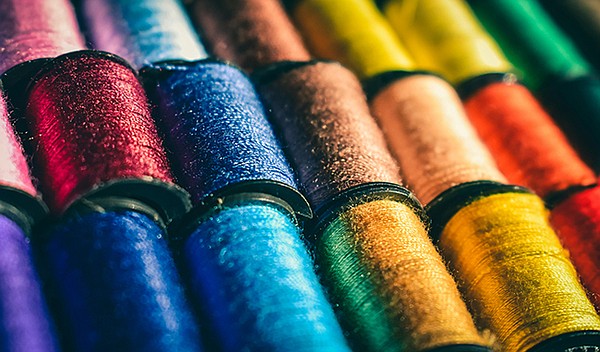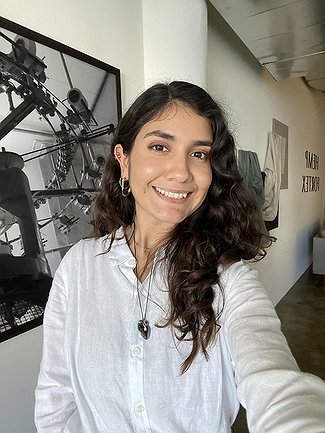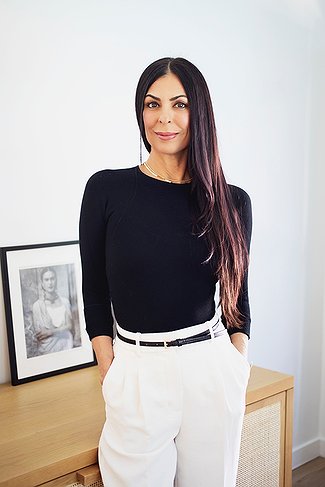INDUSTRY FOCUS: FIBER, YARN AND FABRIC
Classic Elements Lead Trends to Support Sustainable Manufacturing
As the fashion industry continues to promise greater movement toward sustainable manufacturing, at the foundation of the pledges apparel companies make lies the sourcing of fiber, yarn and fabric through responsible means. This trend has, over the last 10 years, transitioned into a mainstay—an expectation from consumers that brands will invest in sustainable partners.
Supporting the sustainable supply chain, the year’s trends in textiles call for durable fabrics in comfortable fabrications that are applied to designs that can become classics in consumers’ wardrobes and investment pieces by lasting for many seasons. Designs turn toward modern, fresh takes on enduring patterns and styles. The fibers and yarns that are used to create these fabrics are the foundations for rich textures, beautiful hand feel and long life cycles.
California Apparel News asked leaders in fiber, yarn and fabrics: What trend in textiles do you feel will define this year as consumers seek change in many areas of their lives, including fashion and apparel?
Binita Bhuta
Vice President Marketing and Sustainability
CovationBio
Consumers are more focused than ever on wellness, spending discretionary funds on experiences versus goods and doing good for society in a quantifiable, meaningful way. These values translate into fashion and dictate what brands they support and what they’re looking for from those brands. They’re supporting brands that are making responsible fabric choices and offering more gender-neutral options in terms of style and color. And they’re seeking options that transition well throughout various parts of their busy lives.
A garment made with Sorona polymer has that lightweight, long-lasting effect and can withstand a full day transitioning from a golf outing to the office to an evening out. Partially plant-based Sorona is responsibly made, and consumers are looking for synthetic and natural bio-based options that align with their values. With quality and durable garments, consumers can minimize waste and the impact on the environment, conserve their own resources, and build their own personal brand identity. There are many choices, and consumers are savvily selecting garments that are functional, versatile, sustainable and now even more customizable.
At CovationBio, we are focused on delivering sustainable, high-performance solutions and collaborating through the textile value chain to meet consumer needs.
Massimo Callegari
U.S. and Canada National Area Manager
ISKO
One trend really standing out in the textile world, especially in denim, is this fascinating blend of authenticity and performance all wrapped up in sustainability. Denim brands have been all about that classic, vintage vibe for so long, but now they’re feeling the tug toward softer, comfier fabrics that still hold onto that authentic denim charm. It’s like they’re saying, “Hey, we want stretch, but we want it to feel like the real deal.”
So, what’s happening is these brands are really leaning into stretch and even super-stretch fabrics, trying to keep that timeless denim appeal while giving us the flexibility and comfort we crave. It’s kind of like finding that perfect balance between style and practicality, which, let’s be honest, we all appreciate in our clothes.
The best part is that sustainability is playing a huge role. Brands and consumers alike are seeking out fabrics that are better for the environment. ISKO has been working on innovation for years and, right now, our entire collection is made using our CTRL+Z material science, which uses only high levels of recycled fibers mixed with regenerated cellulosic fibers. We can provide this while still keeping the authentic fashion appeal of denim and on top of that high performance and durability.
Brands are also going all out and experimenting with different finishes and techniques to make their denim stand out in a sea of blue jeans. Everything from new weaving techniques, laser treatments and textured finishes like flock are all in high demand.
Alejandra Diaz
Business Development
Hemp Fortex
The trend we are seeing is that comfort is performance. Feeling good in what we wear is a fundamental aspect of our daily lives, contributing to overall wellbeing, physical ease and mental clarity. Many people are seeking out hemp due to its sustainable nature but also for its exceptional comfort characteristics—natural breathability, moisture wicking and enhanced softness after each use. Choosing hemp reflects an understanding that a cool, clean and comfortable feeling is the true performance feature needed in daily life. This trend is not confined to the realm of fashion; it extends to a broader lifestyle, one where choices can bring peace of mind. Individuals are reassessing the fibers and materials that clothe their bodies and seeking the dual benefits of comfort and sustainability.
Mark D’Sa
Business Development Specialist
Panda Biotech
The future of textiles lies in finding creative solutions that address both individual desires and collective challenges. The focus on individuality, experience and responsibility to reflect broader societal changes will drive the defining trend and depend on technological advancements, consumer adoption and the industry’s ability to meet these evolving needs.
The most influential trends that continue to gain traction in 2024 are sustainability and circularity. Consumers demand clear information about the origin and impact of their clothing, driving responsible sourcing and production practices. Millennials and Gen Z are more aware of environmental issues, resource scarcity and the social impact of their wardrobes. They are looking for apparel and accessories made of eco-friendly natural fibers that are ethical and durable. Innovative textiles made from cotton, hemp, viscose, lyocell and recycled polyester are increasingly available and getting more attention.
The trend is already set in the direction of textiles produced by methods that help to conserve water and reduce or eliminate chemical waste and greenhouse-gas emissions. The brands and retailers that can achieve all the above without sacrificing quality, comfort and style will be winners.
Mary-Ann Dunkley
Director
Liberty Design
A celebration of freedom and contrast, a break from any traditional rules in its context, in print and pattern this translates into the mixing of florals and geometrics. Expressive, open botanicals will be paired with a precise polka dot, and where color highlights pop in a hand-painted check or stripe classic nostalgic florals become the perfect coordinate. In fabric it is the mixing of textures, so, a knitted wool next to a fine silk-like cotton and a soft organza complemented with a richly textured velvet. In shape, it is the contrast of sportswear with tailoring.
Jen Hodo
Business Development Manager
Birla Cellulose USA
In 2024, amid economic and political uncertainties and driven by heightened environmental and ethical awareness among consumers, sustainability emerges as the continued trend in textiles—though how it is defined is now under an increasingly critical lens.
Circular-economy principles are gaining traction and emphasizing thoughtful design and waste optimization, with our company actively contributing by repurposing textile waste into Liva Reviva fibers and collaborating with innovators in the realm of next-gen materials. To facilitate the adoption of sustainable and circular plant-based fibers, the Birla Cellulose New York Studio serves as a vital education hub for industry professionals, where they can evaluate diverse and innovative textile applications manufactured by a network of leading global mills.
Technologies like blockchain are also enhancing transparency and accountability; platforms like our GreenTrack ensure traceability throughout the supply chain—even tracing back to the exact forest the pulp was sourced from, empowering both brands and consumers to make informed decisions.
This industry shift toward responsible consumption and production aligns with legislative changes, yet it also adds complexity as the demand for sustainability, which can initially increase product costs, clashes with consumers’ needs for increased value amid pressure on household incomes, expected to dampen apparel demand. To navigate this landscape, in addition to design and merchandising considerations, the fashion industry must also invest in innovative production technologies, foster supplier collaboration, educate consumers and adopt a holistic sustainability approach.
Caitlyn Holt
Director of Product Development and Innovation
Cone Denim
As consumers seek change, we feel they seek transparency from many products they purchase daily.
Textile transparency starts with responsible and ethically sourced raw materials and continues into sustainable manufacturing with verified, science-based targets and our commitment to be net zero by 2050.
In addition, the 2024 trend we see in fabrics is versatility and fabrics that can “do it all.” Fabrics must be visually and tactilely interesting, bringing a creative aspect back to aesthetics. Fabrics must give the consumer a sensory experience, including strong visual interest, a great hand feel and comfortable wearing. Fabrics must have verifiable sustainability that carries through to the consumer. Cone Denim achieves this with Oritain and Recycled Claim Standard certification at all our facilities globally.
Ron Kaufman
Sales Manager, Manufacturing Division
Robert Kaufman
Let’s face it, it’s been a rough few years facing the challenge of the pandemic, climate disasters, inflation, political turmoil at home and war abroad. How consumers redefine the world of fashion based on these unfortunate realities, not to mention other key trends like working from home is a real conundrum. I think there will be a gravitation toward nostalgia and comfort, luxury and familiarity.
It’s not really a new formula, it’s what folks like Ralph Lauren do every season. But it works and, in these times, especially lends comfort and feels right for the customer. In my book, classic fabrics like linen, denim, corduroy and flannel, with added washes, finishes, fresh color and pattern, will drive business and compel the consumer.
Chad Lawrence
CEO
NexTex Innovations
Consumers are increasingly mindful of climate change and how their lifestyle choices can influence their carbon footprints. In the realm of fashion and apparel, the predominant textile theme in 2024 is expected to be sustainability.
This entails the ongoing advancement of durable, high-performance materials that contribute minimally to our planet’s environmental footprint. Consumers with a focus on sustainability will seek out products from brands that resonate with their values.
Cindy McNaull
Brand Business Development Director
Cordura
Trend indicators suggest that consumers today are more drawn to timeless products. Durability and reliability are more important than ever and represent a significant shift in attitude when it comes to purchase behavior.
This mindset aligns well with our long-standing mantra of creating durable Cordura Advanced Fabric technologies that will stand the test of time.
David Sasso
CEO
Genesis AdvanceTech Engineering
For 2024, economic instability, environmental concerns and global crises create a challenging backdrop for consumers, which in turn creates havoc in supply chains. In a period of uncertainty, budget-conscious consumers make more-prudent purchases.
Though climate change looms large, its immediate impact on purchasing decisions seems muted, suggesting a lack of awareness of how choices affect the environment. Price still is a significant determining factor for purchasing. Therefore, U.S. brands and retailers struggle to balance environmental responsibility with sales. The lack of action will eventually lead to more government intervention to drive industry-wide change toward more-sustainable practices.
In my experience in the textile industry, incremental and detail-oriented improvements along the textile supply chain hold the key to unlocking meaningful environmental progress. Existing and readily implementable ideas from industry and academia offer significant potential to improve manufacturing processes. I believe, in many cases, these ideas would not significantly increase cost.
Tina Stridde
Managing Director
Aid by Trade Foundation
The textile world is facing enormous pressure to change in 2024, which all actors along the textile value chains and explicitly retailers and brands, producers of textiles and raw materials as well as standard initiatives need to address together. The demand for a transformation toward transparent, ethical and ecologically responsible supply chains is growing from political and societal perspectives, on national and international levels.
The work of the Aid by Trade Foundation plays a role in this sweeping transformation. In collaboration with a diverse array of partners from field to fashion and beyond, the foundation is contributing to a positive social, environmental and economic change in countries where cotton and cashmere are cultivated or produced and in markets worldwide. Throughout its history, our foundation has been putting into practice the principle of help for self-help in a globalized world.
The steadily growing success of this approach is reflected in the continued rise in demand for our certified raw materials and evidenced by the latest sales record of Cotton made in Africa (CmiA) cotton. This development reinforces my belief that if we bring commerce into harmony with our values, the textile trade in particular can be an important lever for making globalization fairer, making societies more resilient to crises, building trust in the work of textile companies and creating new opportunities for sustainable development worldwide.
Baber Sultan
Director of Product Research and Trends
Artistic Milliners
In 2024 I feel there are a few diverse factors at play. Leading the pack is the powerful combination of sustainability and comfort. Expect relaxed silhouettes, soft and natural fabrics, and versatile pieces that seamlessly transition between activities.
Driving this comfort trend is a deeper dive into ethical and sustainable practices. This year, consumers will demand proof of responsible sourcing, fair labor practices, closed-loop production and transparency throughout the supply chain. Gone are the days of relying solely on marketing claims; brands must demonstrate their commitment to a truly sustainable future.
Sherry Wood
Director of Merchandising
Texollini
In 2024, a notable fashion trend might involve the integration of sustainable and tech-enhanced materials that are continually gaining prominence as consumers increasingly value eco-friendly products.
Consumers are likely to seek collections and brands that not only prioritize environmental consciousness through eco-friendly fabrics and practices but also integrate technology for enhanced functionality, such as smart fabrics or wearables.
The intersection of sustainability and technology could redefine the landscape of fashion, reflecting a growing awareness of environmental impact and desire for innovative, purposeful designs.
On the sustainability front, there may be increased emphasis on circular fashion models, encouraging the recycling and upcycling of garments. Additionally, bio-fabrication and the use of alternative eco yarns are on the rise, reducing reliance on traditional resources.
In terms of technology, smart textiles with embedded features could become more prevalent, offering consumers interactive and personalized experiences. This could include clothing that adjusts to weather conditions or offers enhanced physical benefits.
Furthermore, the rise of virtual fashion experiences may gain traction, which not only reduces the environmental impact of physical production but also caters to the growing digital lifestyle.
Brands that are likely to shape the fashion industry for the future will be fostering innovation and addressing consumer preferences for environmentally conscious, technologically advanced apparel.
Texollini has been a leader in creating fabrics for the future while incorporating a vast and wide range of technologically advanced fibers, specialized finishes and sustainable yarns to customize and develop unique styles that will embody the trends defining 2024.
Responses have been edited for clarity and space.




































